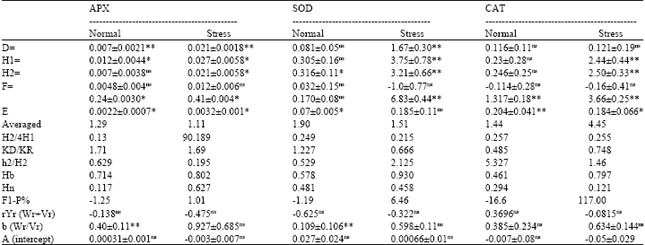Research Article
Inheritance of Antioxidant Activity of Triticale under Drought Stress
Department of Plant Breeding, Faculty of Agriculture, Broujerd Branch,Islamic Azad University, Broujerd, Iran
Z. Zonoori
Department of Plant Breeding, Faculty of Agriculture, Broujerd Branch,Islamic Azad University, Broujerd, Iran
M. Zolnoori
Department of Plant Breeding, Faculty of Agriculture, Broujerd Branch,Islamic Azad University, Broujerd, Iran
A. Jamasbi
Department of Plant Breeding, Faculty of Agriculture, Broujerd Branch,Islamic Azad University, Broujerd, Iran












